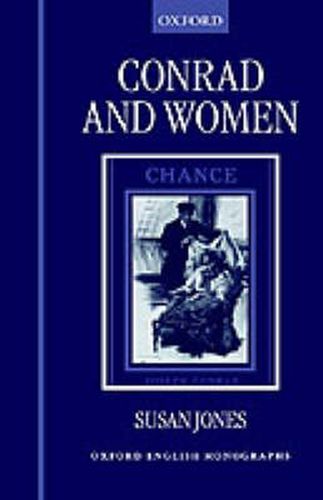Readings Newsletter
Become a Readings Member to make your shopping experience even easier.
Sign in or sign up for free!
You’re not far away from qualifying for FREE standard shipping within Australia
You’ve qualified for FREE standard shipping within Australia
The cart is loading…






Supported by an enduring critical paradigm, the traditional account of Conrads career privileges his public image as man of the sea, addressing himself to a male audience and male concerns. This book challenges received assumptions by recovering Conrad’s relationship to women not only in his life but in his fiction and among his readers. The existing interplay of criticism, biography, and marketing has contributed to a masculinist image associated with a narrow body of modernist texts. Instead, Susan Jones reinstates the female influences arising from his early Polish life and culture; his friendship with the French writer Marguerite Poradowska; his engagement with popular women’s writing; and his experimentation with visuality as his later works appear in the visual contexts of womens pages of popular journals. By foregrounding less familiar novels such as Chance (1913) and the neglected Suspense (unfinished and published posthumously, 1925), she emphasises the range and continuity of Conrad’s concerns, showing that his later discussions of gender and genre often originate in the period of the great sea tales. Conrad also emerges as an acute reader and critic of popular forms, while his unexpected entry into important contemporary debates about female identity invites us to rethink the nature of his contribution to modernism.
$9.00 standard shipping within Australia
FREE standard shipping within Australia for orders over $100.00
Express & International shipping calculated at checkout
Supported by an enduring critical paradigm, the traditional account of Conrads career privileges his public image as man of the sea, addressing himself to a male audience and male concerns. This book challenges received assumptions by recovering Conrad’s relationship to women not only in his life but in his fiction and among his readers. The existing interplay of criticism, biography, and marketing has contributed to a masculinist image associated with a narrow body of modernist texts. Instead, Susan Jones reinstates the female influences arising from his early Polish life and culture; his friendship with the French writer Marguerite Poradowska; his engagement with popular women’s writing; and his experimentation with visuality as his later works appear in the visual contexts of womens pages of popular journals. By foregrounding less familiar novels such as Chance (1913) and the neglected Suspense (unfinished and published posthumously, 1925), she emphasises the range and continuity of Conrad’s concerns, showing that his later discussions of gender and genre often originate in the period of the great sea tales. Conrad also emerges as an acute reader and critic of popular forms, while his unexpected entry into important contemporary debates about female identity invites us to rethink the nature of his contribution to modernism.